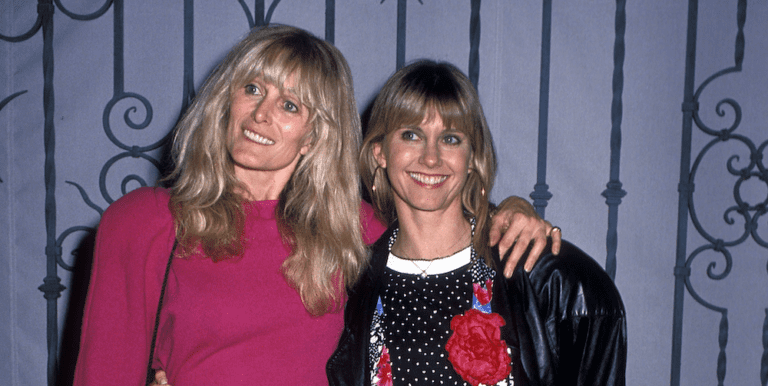Her status as a household name belied a comparatively brief commercial peak in the early 1990s, thanks to her mesmerising interpretation of Prince’s Nothing Compares 2 U. But she was never in any danger of being relegated to being a one-hit wonder.
O’Connor’s life and career were characterised by irregularity and a sense of being at odds with her surroundings. Her childhood was fraught. After her parents separated when she was young, O’Connor lived mostly with her mother, who she claimed was abusive, and involved her in shoplifting and fraudulent charity collecting.
Truancy and crime led to a spell in the Catholic church-run Grianán Training Centre, a harsh rehabilitation centre associated with the infamous Magdalene Laundries. Although traumatic, the centre provided her with an entry into music when a teacher asked her to sing at a wedding, which led to encounters with musicians who encouraged her to write lyrics and pursue the guitar.
Adversity infused her music with a punk spirit, an oppositional attitude that was writ large throughout the rest of her career. By the time her mother died in a car crash when O’Connor was 18 years old, the singer was well on her way. She had dropped out of school and formed a band called Ton Ton Macoute – with typically spiky attitude – a name derived from a mythical Haitian bogeyman, and also the dictator Papa Doc Duvalier’s feared secret police.
A distinctive template as a singer-songwriter
Having captured the attention of former U2 label boss Fachtna O’Ceallaigh, and collaborated with The Edge on a song for the film Captive, her solo career began in grand style with The Lion and the Cobra in 1987. A gold record in the UK, US, Canada and the Netherlands – featuring the Top 40 single Mandinka – it marked out her image and distinctive voice, clear and pure, but never demure.
Her trademark cropped hair and forthright bearing set her apart from prevailing female singer-songwriters. Shunning both overtly sexualised imagery and quirky hippie-chick vibes, O’Connor’s aesthetic was blunt and raw, although the clarity of her voice gave it commercial traction.
This reached a pinnacle on her next album, 1990’s I Do Not Want What I Haven’t Got – a multi-platinum worldwide number one that featured her best-known recording, Nothing Compares 2 U which she made completely her own. Propelled by a stark video in unflinching close-up, tears running down her face, it made her an international star. But O’Connor’s predilection for musical exploration, political confrontation and emotional honesty meant that her mainstream career quickly self-combusted.
Despite the success of her early recordings she took a counter-intuitive turn on her next album, 1992’s Am I Not Your Girl?, which featured lush versions of jazz standards. While her voice was more than up to the task of interpreting the classics she had grown up with, the departure from her previous work saw a critical and commercial step down from the trailblazing success of her previous album. More significantly, she used her promotional activity in America to showcase her status as a protest singer rather than a pop star.
Given the centrality of her personal, and musical, voice to her career, it’s perhaps apt that two of her most notable live performances are both a cappella, and confrontational. An appearance on TV show Saturday Night Live in October 1992 saw her drop the planned performances of standards from the album and replace them with a version of Bob Marley’s War. She wanted to re-tool it as a protest against child abuse in the Catholic church, and the cover up that followed. The change of song was agreed by the show’s producers.
What they hadn’t planned on was for O’Connor to tear up a picture of the Pope at the denouement of the performance. The subsequent furore was swift and intense. O’Connor was vilified in the press, and the NBC network received over 4,000 complaints. Two weeks later, at a star-studded tribute to Bob Dylan, she was booed by the crowd and stopped the band to shout another rendition of War before leaving the stage in tears, comforted by Kris Kristofferson.
Unbowed and iconic
Even if her career never quite acquired equilibrium, O’Connor the artist remained unbowed and exploratory. Taking lessons in Italian bel canto singing, her subsequent seven albums tacked across genres – reggae, hip-hop, rock, soul and folk – placing her voice at the centre of original material and distinctive interpretations of an eclectic range of artists from Curtis Mayfield to Kurt Cobain.
Her later releases were stronger on critical acclaim than commercial clout, and her well-publicised mental health difficulties led to hiatuses in her music. Ever the controversialist, she continued to weigh in on points of principle, such as her critique of Miley Cyrus over the sexualised video for Wrecking Ball, and the subsequent public spat.
Despite these gaps, and the personal tragedies like her son’s suicide in 2022, O’Connor’s fierce adherence to her principles of self-expression saw her win considerable public affection. She was, of course, vindicated over her accusations of abuse in the Catholic church. But her uneven approach to public life – announcements of retirement followed by retractions, a spell as a “priest” followed by her conversion to Islam (she went by the name Shuhada’ Sadaqat from 2019) – did little to dim her appeal in the long term.
Ultimately despite her difficulties, or even because of them, she exemplified what it was to be an icon. Her visual distinctiveness, determination and refusal to meet the mainstream half-way mean that her instantly recognisable voice cut through the shifts and uncertainty of her personal life and public debate. In the end, nothing quite compares to her.![]()
Via The Conversation







